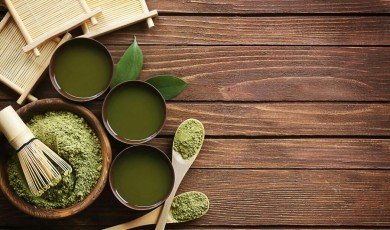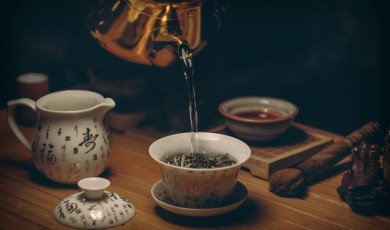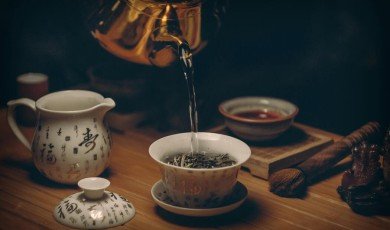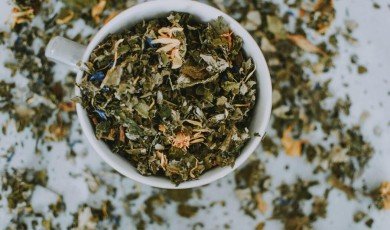For centuries, tea lovers have relied on tradition, intuition, and word-of-mouth recommendations to find their next favorite cup. Now, a new wave of intelligent technology is reshaping how we explore the world of tea, from discovering rare origins to crafting perfectly personalized blends. Instead of spending weeks sifting through reviews, blogs, and tasting notes, enthusiasts can tap into data-driven insights that match their unique palate with teas they might never have encountered otherwise.
Modern AI tools are bringing together expert knowledge, sensory science, and community feedback in one place, helping drinkers move beyond basic black or green tea into a universe of nuanced flavors, aromas, and brewing styles. Whether you are a casual sipper or a connoisseur, intelligent platforms can guide you toward surprising, sophisticated, and deeply satisfying new infusions that fit your taste and lifestyle.
1. Personalized Flavor Profilers for Tea Drinkers
One of the most powerful advances in tea discovery comes from flavor profiling systems that analyze your preferences and create a unique taste “fingerprint.” These platforms ask questions about what you like in food and drink—sweetness levels, bitterness tolerance, citrus notes, floral aromas, or smoky hints—and translate these answers into a detailed flavor map.
By comparing your flavor profile with massive datasets of tea reviews, expert tasting notes, and chemical composition, intelligent engines can recommend teas tailored to your precise tastes. Instead of generic categories like “fruity” or “herbal,” you get nuanced guidance such as, “Try lightly roasted oolongs with honey and orchid notes,” or “Explore Japanese greens with marine umami and steamed vegetable character.”
Over time, as you rate and review what you drink, your profile becomes even more accurate. The system adapts if you discover a love for astringent Darjeelings or if you suddenly favor smooth, malty Assam blacks. This feedback loop transforms trial-and-error into a continuously improving journey of discovery.
2. Intelligent Tea Pairing and Food Matching
Tea pairing used to be a niche skill reserved for sommeliers and specialized tea houses. Today, intelligent matching engines can suggest ideal teas to go with your meal, dessert, or even mood. By analyzing flavor compounds, texture, and intensity, these systems offer pairings that go well beyond “green tea with fish” or “black tea with breakfast.”
For example, if you’re enjoying a rich, creamy dessert, the engine might recommend a brisk, tannic black tea to cut through the sweetness, or a roasted oolong to mirror caramelized flavors. If you’re cooking a spicy curry, you might be guided toward a sweet, cooling herbal infusion to balance the heat. These recommendations take into account not just the tea’s flavor, but also caffeine level, time of day, and your past reactions to similar pairings.
Many pairing platforms also incorporate cultural and regional knowledge, highlighting traditional matches—such as specific Chinese teas with dim sum or Japanese sencha styles with light seafood—while suggesting modern twists that suit global palates.
3. Discovery Engines for Rare and Niche Tea Varieties
Even dedicated tea fans often remain within familiar categories: common black teas, flavored blends, and a few popular greens. Intelligent discovery engines are changing that by surfacing rare, obscure, or region-specific teas that align with your preferences but lie far outside your usual choices.
These systems scan online catalogs, specialty retailers, and community reviews to identify hidden gems: small-batch oolongs from less-known Taiwanese regions, single-origin African whites, or wild-foraged herbals with unique tasting profiles. By clustering similar teas and highlighting what sets each apart, they make it easier to understand why a particular rare tea might appeal to you.
They can also filter recommendations by ethical and sustainability criteria, such as organic certification, fair trade practices, or smallholder-produced lots. This allows you to support responsible producers while exploring flavor profiles you may never have heard of.
4. Smart Brewing Assistants for Perfect Cups
Even if you find an exciting new tea, brewing it properly can be a challenge. Temperature, steep time, water quality, and leaf-to-water ratio dramatically affect the final result. Smart brewing assistants solve this by turning expert knowledge and user feedback into precise, adaptive brewing guidance.
These assistants can suggest ideal parameters based on tea type, processing style, and even brand. As users log what worked or didn’t, the system refines its recommendations, building a knowledge base of “crowd-tested” brew profiles. For delicate Japanese greens, it might recommend lower temperatures and shorter steeps; for hearty breakfast blends, hotter water and longer infusions.
Some assistants integrate with connected kettles or smart teapots, automatically adjusting temperature or timing and sending step-by-step prompts. This reduces the risk of oversteeping an expensive tea or ruining a rare sample with boiling water when it needs a gentler approach.
5. Flavor-Mapping Tools for Creating Custom Blends
Custom blending used to be the domain of professionals who understood how different bases, botanicals, and aromatics interact. Flavor-mapping systems are unlocking this craft for enthusiasts by visualizing how ingredients combine and predicting the likely taste of a blend before you ever steep it.
These systems work with flavor wheels, ingredient databases, and sensory data to show which teas and botanicals complement or clash with each other. If you enjoy floral jasmine and bright citrus, the engine might suggest a green tea base with lemongrass and a subtle rose component, warning you if your recipe risks becoming too perfumed or bitter.
By experimenting virtually, you can iterate on blends, fine-tune ratios, and save your favorite recipes. Over time, the system learns what balance you prefer—bold vs. subtle, sweet vs. dry, smooth vs. brisk—and offers suggestions that align with your evolving style. This turns personal blending from guesswork into a creative, data-guided craft.
6. Community-Powered Recommendation Platforms
The most compelling tools for tea discovery don’t operate in isolation; they harness community feedback to refine and improve suggestions. Platforms that allow users to log tastings, write notes, upload photos, and rate teas provide a rich dataset that intelligent systems can analyze.
Instead of simply counting stars, advanced models look at detailed descriptors—like “grapey,” “nutty,” “astringent,” or “buttery”—and correlate them with user preferences. If you and another drinker share similar ratings across many teas, the system can recommend what they love that you haven’t tried yet, even if it’s from a tiny producer halfway around the world.
This approach blends the warmth of tea community culture with the precision of data analysis, letting you benefit from thousands of tastings without having to read every review yourself.
7. Educational Guides Tailored to Your Tea Journey
Beyond recommendations, intelligent platforms are becoming powerful teaching companions. Instead of generic articles about black vs. green tea, you receive learning paths tailored to what you actually drink and want to explore next.
If you’ve recently enjoyed several lightly oxidized oolongs, the system might suggest a guide on oxidation levels or a comparison between Taiwanese and Chinese production methods. If you gravitate toward herbal tisanes, it could steer you to information on traditional medicinal uses, caffeine-free alternatives, or how to blend your own evening infusions.
This personalized education helps you develop a more refined palate, understand what you’re tasting, and make more confident decisions when trying something new.
Conclusion: A Smarter Way to Explore the World of Tea
The world of tea is vast, nuanced, and endlessly evolving. Intelligent tools are making that world more accessible by translating complex flavor science, expert knowledge, and global community experiences into clear, personal guidance. Instead of wandering aimlessly through countless options, tea lovers can now follow a path shaped by their own tastes, curiosities, and values.
Whether you want to refine your brewing, discover rare origins, master pairing, or design your own blends, embracing these technologies can dramatically expand your horizons. As they continue to learn from millions of cups brewed and reviewed, the experience of finding your next favorite tea becomes not just easier but more exciting, turning every new infusion into a carefully guided step on a lifelong journey of flavor discovery.








